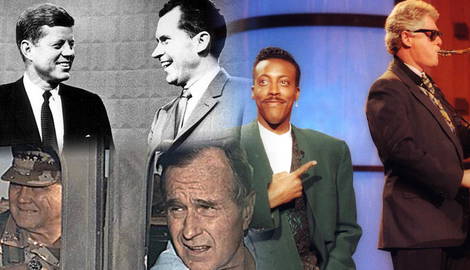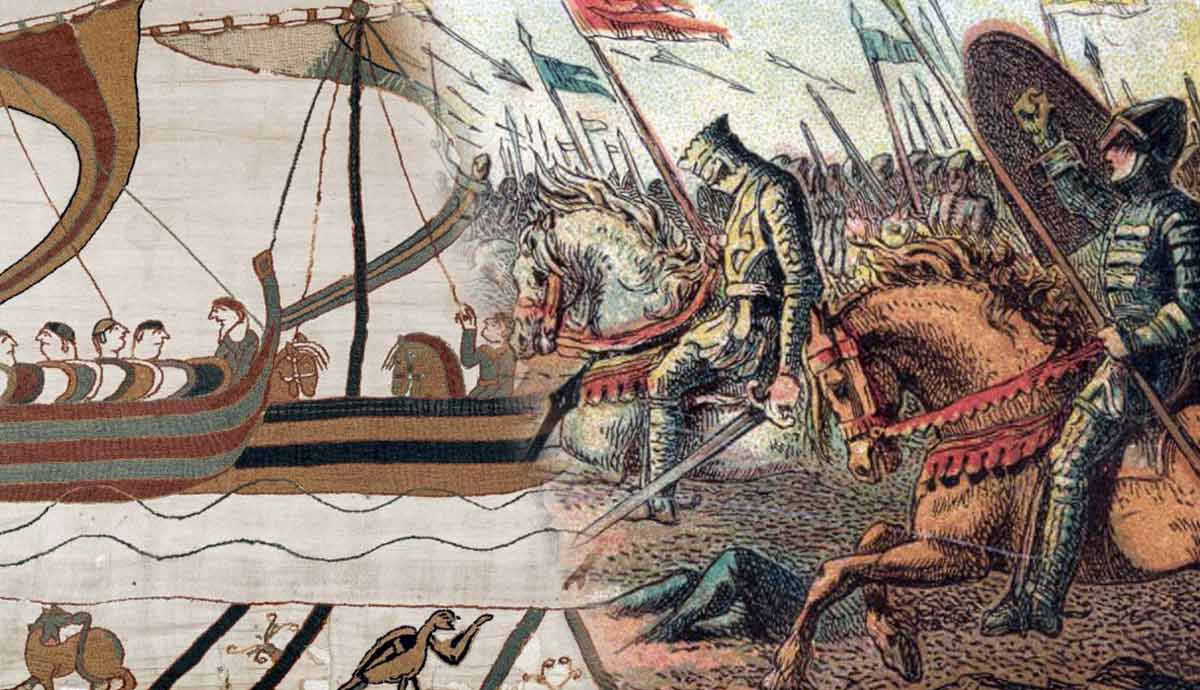
Ever since photography became widespread in the 1860s, American politicians have been careful to cultivate images of success and competence. While early presidents were often only photographed in formal settings, improvements in camera technology soon required presidents to “look presidential” in varied settings. When television hit the scene in the 1950s, presidents and presidential candidates had to add to this skill set: mannerisms, speaking voice, interactions with others, etc. Some presidential candidates were savvy when it came to television and photo ops…while others erred memorably. Others famously lucked into candid photos that caught them in split seconds that epitomized their campaign message. Read on for a look at the presidential candidates who were most affected—for good and ill—by photographs and television.
Setting the Stage: Emergence of Photography in Politics

Although photography began a few decades earlier, significant political effects of photography can be traced to the American Civil War (1861-65). This was the first American war to have the immediate aftermath of battles photographed and published. The Union was led by President Abraham Lincoln, who had been photographed several times before becoming president and was the first president most Americans saw photographs of in print. Prior to the 1860s, publications had difficulty printing photographs, so they used drawn illustrations based on photographs instead.
While Lincoln himself wrote little about photography, his frequent trips to be photographed implied that he understood the power of this medium in shaping his public image. Although newspapers were not regularly publishing these photographs, photographic books and carte-de-visites were popular. By the end of the Civil War and Lincoln’s presidency (which was tragically cut short by assassination), Americans were seeing the world through a powerful new medium. Since Abraham Lincoln, all presidents have been regularly photographed.
1930s: Franklin D. Roosevelt Protects His Image

One media-savvy US president was famous for harnessing one form of media…while being cautious of another. Franklin D. Roosevelt, Democratic governor of New York, ran for president in 1932 during the Great Depression. Since 1921, at age 39, Roosevelt had been using a wheelchair due to an attack of polio. He used a regular wheelchair in private but avoided it in public, preferring to use traditional-looking chairs with small wheels at the end of each leg. Roosevelt, known as FDR, knew many Americans would not accept a president in a wheelchair.
To project confidence and the appearance of walking, FDR usually approached podiums with the help of others. His administration also requested that the media not take photographs of the president in any situation where he might appear handicapped or struggling. During that era, the media typically complied. Rare footage of FDR walking with assistance and leg braces from 1937 exists; photographers were usually stopped from photographing or filming FDR’s disability by the Secret Service. However, FDR took full advantage of radio in the 1930s with his fireside chats, using his confident and soothing voice to inspire Americans to persevere during the economic downturn.
1952: Eisenhower Uses Televised Ads

By the early 1950s, television had replaced radio as the newest and most popular form of media in the United States. In the 1952 presidential campaign, both nominees took advantage of the new medium of television for the first time. While Democratic nominee Adlai Stevenson created lengthy “infomercials,” Republican nominee Dwight D. Eisenhower created quick, snappy ads that became very popular. Due to their length, Stevenson’s ads ran later at night, when fewer viewers could see them.
Eisenhower’s TV ads helped popularize his “Ike” nickname, which resonated with voters. His team used advertising executives to craft powerful ads, such as the Eisenhower Answers America series. These were edited to appear to show the former World War II general spontaneously and masterfully answering policy questions asked by everyday citizens. Eisenhower appeared to be a man of the people, able to answer questions in plain language. Ultimately, his superior TV ads helped him easily defeat Stevenson for the White House.
1960: The First Televised Debate

Edited TV ads were one thing—how would candidates fare on live television? In 1960, they got their chance: the first televised presidential debates. Eisenhower’s vice president, Richard M. Nixon, was the Republican presidential nominee. He faced US Senator John F. Kennedy (D-MA), and the race was very close. Both men were young, and there was relatively little major policy dispute. Much of the race would come down to which man was seen as better prepared to run the country during the tensions of the Cold War.
At the debate, Kennedy listened to his team and wore a dark-colored suit, as well as makeup on his face. Nixon refused the makeup and wore a lighter-colored suit. Unfortunately for Nixon, the suit blended in with the background, and his lack of makeup made him appear sickly. This was ironic, as it was Kennedy who had undisclosed health problems. Kennedy’s better understanding of TV technology helped him look better on screen, and this translated into a narrow win that fall. There were other televised debates after the famous first one on September 26, but Nixon could not overcome Kennedy’s perceived initial victory.
1980: An Actor Runs For The White House

Twenty years later, a veteran of the cameras made it onto the presidential campaign trail: Ronald Reagan. The Hollywood actor spent almost thirty years in front of the cameras in movies and television before transitioning to politics. In the late 1960s, Reagan served as governor of California and first pursued the Republican presidential nomination in 1976. Reagan lost the nomination at the convention—the most recent contested convention in history—but won it easily in 1980. He went on to face incumbent president Jimmy Carter in the debates.
Reagan’s acting chops came in handy. Despite being the oldest man to become president at the time, age 69, Reagan appeared poised and confident. He was able to portray his age as experience and wisdom. A majority of Americans liked Reagan’s poise, delivery, and appearance and elected him to the White House that November.
As president, Reagan reportedly got a kick out of the famous line of the movie Back to the Future, where the protagonist travels back to the 1950s, regarding who the President of the United States is in 1985: “Ronald Reagan?! The actor?!”
1988: A Pic Makes a Candidate Look Too Silly

While Reagan knew how to work the camera with his decades of acting experience, the Democratic nominee in 1988, facing off against Reagan’s vice president, did not. George Bush Sr., the two-term vice president, easily won the Republican nomination for president and enjoyed the popularity of the Reagan administration. This included many geopolitical victories as the Cold War waned. The Democratic nominee, Massachusetts governor Michael Dukakis, looked relatively “weak” on foreign policy—and on crime, thanks to the controversial Willie Horton negative TV ads.

To try to look tougher and more aggressive, Dukakis accepted a photo op in a tank. The result would go down in history as one of the worst presidential candidate photo ops ever. Pundits felt that the helmet and headgear Dukakis wore while still wearing a button-down shirt and necktie made him look silly. The governor’s grin did not help, either. Ultimately, many voters felt the tank ride made the Massachusetts Democrat appear out-of-his-depth when it came to the role of commander-in-chief. World War II veteran Bush, heir to the Reagan legacy, easily won in November.
1992: Hip Candidate Goes on Popular TV

Bush got some great photo ops as president, especially during the Gulf War (1990-91). The commander-in-chief traveled to Saudi Arabia in November 1990 during Operation Desert Shield and spent Thanksgiving with the troops. When the brief war ended with a resounding victory of the US and its allied coalition, the White House threw a victory parade—the last one so far in American history. Bush was enjoying stratospheric popularity as a wartime president. But then came the recession of 1991, and Bush wasn’t as popular anymore.
Still, Democrats had a long way to go to deny Bush re-election in 1992. Fortunately, Democratic presidential nominee Bill Clinton, the young governor of Arkansas, was very media-savvy. Famously, he played the saxophone on The Arsenio Hall Show that June. The appearance made Clinton more popular by showing that he was willing to take risks and have fun. Young voters, especially music lovers, were more drawn to Clinton after this TV appearance. Combined, Clinton’s relative youth, media savvy, and focus on the economy helped him defeat Cold Warrior Bush in November.
2003: Flight Suit for “Mission Accomplished”

Bush’s re-election loss in 1992 would be avenged by his son eight years later, who narrowly defeated Clinton’s vice president, Al Gore, in the Electoral College despite losing the popular vote. George W. Bush, governor of Texas, benefited from his own media image as a plainspoken man of the people. His calm demeanor helped him in the televised debates, where Al Gore faced higher expectations…but turned voters off when he sighed at some of Bush’s responses.
The new presidency of George W. Bush changed radically on September 11, 2001, turning the amiable Texan into a wartime leader. Controversially, his administration invaded Iraq in March 2003, arguing that Iraqi dictator Saddam Hussein possessed illegal weapons of mass destruction (WMDs). On May 1, 2003, in a photo op often ridiculed by political opponents, Bush arrived on the aircraft carrier USS Abraham Lincoln in a fighter jet—wearing a military flight suit. The president gave a “Mission Accomplished” speech, which hurt him later when an aggressive insurgency began against the US occupation in Iraq.
2016: Bird Lands on Progressive Icon’s Podium

In 2016, it was widely assumed that former First Lady Hillary Clinton, who had gone on to serve as a US Senator (D-NY) and Secretary of State (2009-12), would easily clinch the Democratic presidential nomination. Few Democrats bothered to challenge her candidacy…except progressive US Senator Bernie Sanders (I-VT). Sanders’ was old, and his hair often appeared unkempt, but his less-than-polished image—similar to George W. Bush—gave Sanders an air of authenticity. Surprisingly, the self-proclaimed “democratic socialist” began winning primaries and caucuses against Clinton during the spring of 2016.
On March 25, 2016, a small bird landed on Sanders’ podium as he gave a speech at a rally in Oregon. Viewers were delighted and considered it a political endorsement from “Mother Nature” herself, which fit with Sanders’ ultra-liberal campaign. The image went viral online and gave Sanders some positive media publicity. Ultimately, however, Clinton won the Democratic primaries in a closely contested heat that went all the way to the final primary in California.










